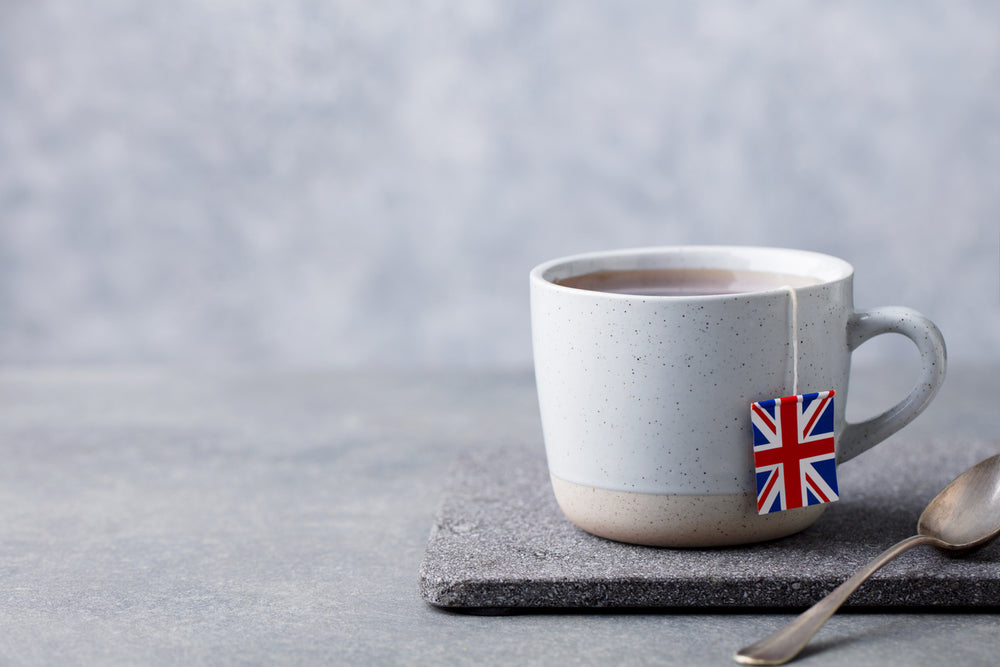Hosting an afternoon tea party is a delightful way to bring a touch of British tradition to your own home. This timeless and elegant gathering is perfect for celebrating special occasions or simply enjoying a leisurely afternoon with friends or family. Here, we will guide you through the essential elements of hosting a traditional British afternoon tea so you can host a memorable party for your friends and family.
1. The Perfect Setting

Creating the right atmosphere is key to hosting a memorable afternoon tea. Choose a suitable location – it could be anywhere, like your dining room, garden, or a cozy corner of your living room. Set a beautiful table with crisp linen, delicate china, and fresh flowers to create an inviting ambiance. Fresh flowers like roses, daisies, or lavender look beautiful and smell heavenly. Adding delicate lace doilies would be a nice touch. Classical or instrumental music in the background would be so wonderful for the occasion.
Use a tiered cake stands to display the treats and goodies you offer your guests. Traditionally, The three-tiered cake stands were the centrepiece of the table. This stand was used to display a variety of sweet and savoury treats, with scones typically occupying the top tier, finger sandwiches on the middle tier, and an assortment of cakes and pastries on the bottom tier.
2. Tea Selection

Tea selection plays a central role in traditional British afternoon tea. Offer a variety of tea options such as classics of high-quality loose-leaf teas - Earl Grey, English Breakfast, and Darjeeling. Consider herbal and fruit infusions for those who prefer caffeine-free options. You must also keep hot water, milk, lemon slices, and sugar cubes for guests to personalize their tea. Provide an assortment of tea infusers or strainers to ensure your guests can brew their tea to their desired strength.
3. Finger Sandwiches

Prepare an assortment of delicate finger sandwiches and canapés. They are an essential component of afternoon tea as these bite-sized delights offer a medley of flavours and textures. Traditional sandwiches include cucumber and cream cheese, smoked salmon and dill, egg and cress, roast beef with horseradish, coronation chicken, and tangy chutney are some great options. There are endless possibilities to suit various tastes. Use thinly sliced bread and trim off the crusts for an authentic touch. Cut the sandwiches into bite-sized triangles or rectangles. Consider offering vegetarian and vegan options as well, like roasted vegetable or hummus-filled sandwiches. Their small size and delicate presentation make them easy to handle and enjoy.
4. Scones: The Heart of Afternoon Tea

Scones are an essential component of British afternoon tea. Serve them hot straight from your oven with generous dollops of clotted cream and strawberry jam. Traditional scones are plain, cheese, or fruit-flavoured. But you can also provide additional toppings such as honey, butter, lemon curd, etc. Ensure that you provide a knife for spreading the cream and jam. Make small plates and napkins available for your guests.
5. Sweet Treats

There are so many interesting sweet treats that you can serve for afternoon tea.
Classic cakes like Victoria sponge cake, a light and fluffy vanilla cake layered with jam and cream, are a staple in afternoon tea. Lemon drizzle cake, with its tangy lemon syrup-soaked sponge, is another popular choice. You can also consider offering other favourites, such as chocolate cake or carrot cake, in mini portions for variety.
Miniature pastries add an elegant touch to the sweet selection. Consider including éclairs, which are delicate choux pastries filled with cream and added toppings with chocolate ganache. Tartlets with various fillings like a fruit compote, custard, or chocolate ganache are also excellent choices to showcase different flavours and textures.
Shortbread biscuits are a classic accompaniment to afternoon tea. Their buttery and crumbly texture pairs perfectly with a cup of tea. You can offer traditional round or finger-shaped shortbread biscuits. For added variety, consider including other biscuit options like chocolate chip cookies, gingerbread, or macarons.
Food items like mini meringues, fruit tarts, or individual truffles for guests to indulge in. These can provide a burst of different flavours, textures, and a touch of decadence to the tea spread.
6. Etiquette and Traditions

Part of the charm of a traditional British afternoon tea lies in its etiquette and customs. Encourage your guests to follow these traditions by holding their teacups with the pinky finger down, stirring their tea gently, and placing their used teaspoons on the saucer. Remind them to take small bites of the sandwiches and scones to savour their delicate flavours. Afternoon tea would be incomplete without engaging in lively conversation!
Did You Know?
English afternoon tea originated in the 1800s when Anna, the 7th Duchess of Bedford, who was a close friend of Queen Victoria and a prominent figure within London society, complained of "having that sinking feeling" during the late afternoon.
The largest-ever afternoon tea party took place in the UK in 2018, where 826 people gathered to enjoy tea, scones, and sandwiches. The event had set a Guinness World Record for the largest afternoon tea party.
National Afternoon Tea Week in Britain is celebrated annually in the month of August. It is a week-long celebration dedicated to the cherished tradition of afternoon tea, with many venues offering special menus and promotions to mark the occasion.
Sipping Delights: The Rich Tradition and Enduring Charm of Afternoon Tea

Hosting your own traditional British afternoon tea party allows you to immerse yourself in the elegance and charm of this beautiful tradition. Following the above tips will let you create a truly memorable experience for your guests. So gather your friends and family and let the delightful indulgence of British afternoon tea transport you to a bygone era of sophistication and refinement.


 Christmas 2025
Christmas 2025
 Frozen Food
Frozen Food
 Baking
Baking
 Beans, Peas, Soups & Tins
Beans, Peas, Soups & Tins
 Biscuits, Crackers & Cookies
Biscuits, Crackers & Cookies
 Candy / Sweets
Candy / Sweets
 Crisps & Snacks
Crisps & Snacks
 Chemist / Pharmacy
Chemist / Pharmacy
 Desserts
Desserts
 Gravy, Stock & Paste
Gravy, Stock & Paste
 Haggis
Haggis
 Indian Sauces, Paste and Pickle
Indian Sauces, Paste and Pickle
 Jams & Preserves
Jams & Preserves
 Poppy Appeal
Poppy Appeal
 Pot Noodles & Super Noodles
Pot Noodles & Super Noodles
 Scone Mix
Scone Mix
 Gluten-Free / Free From
Gluten-Free / Free From
 Tea Accessories
Tea Accessories
 Teapot & Tea sets
Teapot & Tea sets
 Tea For One
Tea For One
 Sugar & Creamer
Sugar & Creamer
 Tableware
Tableware
 Serveware
Serveware
 Plates & Trays
Plates & Trays
 Bowls
Bowls
 Cups & Saucers
Cups & Saucers
 Mugs
Mugs
 Silverware
Silverware
 Dinnerware - Accessories
Dinnerware - Accessories
 Dinnerware - For Pets
Dinnerware - For Pets
 Victoria Eggs - Hand-Drawn UK Homeware
Victoria Eggs - Hand-Drawn UK Homeware
 Jewelry & Accessories
Jewelry & Accessories
 Sale
Sale
 Christmas Gifts
Christmas Gifts

